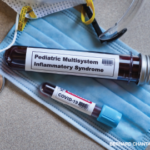The Needs of Long-Haulers
Post-COVID Care Centers are one way the healthcare system is addressing this new patient population. According to an NBC News report, more than 80 of these centers exist nationwide and at least 10,000 people have been seen in 64 of the centers surveyed.8 (View an interactive map with a list of these centers by state on Survivors Corps, a patient website.) These centers provide a multidisciplinary team approach to the evaluation and management of post-COVID patients with persistent symptoms.
Joan Bosco, MD, assistant professor, Department of Internal Medicine, Mount Sinai, N.Y., works in the Mount Sinai Center for Post-COVID Care, one of the first of these centers to open, in May 2020. She emphasizes how significant and scary these persistent symptoms can seem, particularly when they present in previously healthy young people.
“The most dramatic post-COVID presentation we are seeing is COVID fatigue, with symptoms indicative of a dysregulation of the autonomic nervous system that result in elevated heart rates and drops in blood pressure,” she says, adding the most severely affected patients have a hard time getting out of bed on some days.

Dr. Bosco
In the sample of 47 new patients she and her team saw in June/July 2020, Dr. Bosco says 24 had fatigue, 21 were short of breath, 17 had memory issues or cognitive impairment, 16 had neuropathy, 15 had anxiety or nightmares, and 11 had loss of smell or distorted taste. Although assessment of these patients initially included imaging studies and other laboratory tests, Dr. Bosco notes the center no longer routinely uses these tests because, for the most part, the tests came back normal.
“The center is still ordering extensive lab tests and imaging, but doctors are more discerning in what studies they order [because] many routine studies will be normal in a good percentage of these patients,” she says.
As of January 2021, Dr. Bosco says the center was seeing about 170 new patients per month. Each patient undergoes an initial evaluation and is then referred to whatever specialist within their network—or in the patient’s network, if different—that the symptoms warrant. Patients are asked to return at six months for a follow-up evaluation.
“The one thing that seems to be helping is physical therapy, but it’s a gradual process,” she says. “We have a post-rehab program with a special protocol for post-COVID-19 patients.”
Further information on clinical experience in providing post-acute COVID-19 care to patients with persistent symptoms can be found online in a January 2021 webinar sponsored by the Centers for Disease Control & Prevention.



